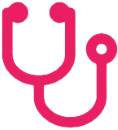Pre-Diagnosis Prediction

In England there are an estimated 15.4m patients with a Long Term Condition (LTC) of which over 1.1m people are undiagnosed. Diagnosing and treating those patients could save the NHS over £3.4bn of avoidable Healthcare spend per annum. Finding those patients is now possible using Artificial Intelligence (AI) and medical records.
Based on proactive diagnostics, patients can be part of targeted screening programmes thereby reducing long term Healthcare costs. An example of this service is provided by the i5 Pre-Diagnosis Prediction (i5 PDP) module.
i5 PDP is an Artificial Intelligence and algorithm based clinical evaluation tool that can identify undiagnosed patients with a high likelihood of having, right now or at some date in the near future, a Long Term Condition (LTC). This Population Health Management (PHM) approach to finding undiagnosed populations uses patient medical history and calculates the probability of the patient having an LTC. The results can be used by Health Authorities for PHM, by Hospitals to support planning, by GPs and hospital Clinicians to identify patients suitable for clinical reviews and screening programmes and by Insurers in their costing exercises and directing healthcare communications to their customers.
As i5 PDP incorporates ICD-10 and ICD-11 coding, the tool is transferable to the Health environments of over 130 different countries. i5 can arrange for complete i5 PDP reports to be created or can licence the software to appropriate Healthcare or insurance organisations which have the rights to access patient data.
As noted in the Case Studies section, i5 PDP has been used for, amongst a range of projects:
- Identifying 2,673 individuals in a London borough that are living with undiagnosed Atrial Fibrillation
Targeted Screening Programmes – The Atrial Fibrillation Challenge - Facilitating the registration, in one Liverpool locality in one year, of over 3,000 patients with a range of previously unrecognised LTCs
Targeted Screening Programmes – Finding Undiagnosed Patients - Establishing the identities of those patients of the largest hospital group in the Kingdom of Saudi Arabia which were at risk of Atrial Fibrillation
Saudi Arabia – Atrial Fibrillation - Analysing around 500,000 medical records in Saudi Arabia to identify those at risk of Diabetes
Saudi Arabia – Diabetes Mellitus
Referral Recommendations
To provide an effective healthcare service, there is a need to ensure that local services meet local needs so that patients that have needs are identified can be directed to the most appropriate services.
T he identified populations arising from i5 COP (see above) can provide evidence and candidates for out-of-hospital services to local populations and thereby support clinicians in referring patients into other services. i5 Targeted Social Prescribing (TSP) is a service that incorporates this approach to Population Health Management (PHM).
he identified populations arising from i5 COP (see above) can provide evidence and candidates for out-of-hospital services to local populations and thereby support clinicians in referring patients into other services. i5 Targeted Social Prescribing (TSP) is a service that incorporates this approach to Population Health Management (PHM).
i5 TSP AI algorithms match patient groups to social prescribing services and interventions. Patient cohorts that will most benefit from a specific social prescribing intervention are identified based on best practice evidence. Specific individuals within those cohorts can be re-identified by NHS Digital from patient cohorts provided by i5 and thereby come to the attention of their GPs who can prescribe appropriate non-clinical treatments. Such treatments include Arts on Prescription, Ecotherapy for Substance Abuse patients, Exercise on Prescription and many more.
The i5 TSP results themselves inform Health economy decision makers as to which services have the highest probability to deliver the best outcomes for which size of population, identify care gaps and support the development of New Models of Care.
For example, i5 TSP has been used for calculating:
- Potential savings from Social Prescribing programmes reducing secondary care use quantified for each of the 32 London Clinical Commissioning Groups (CCGs) and 5 London Sustainability and Transformation Partnership (STP)
Referral Recommendations - Social Prescribing in London - Economic effect for the NHS in London of 48 Digital technologies through the associated impacts on workflows, workforce and estates
Strategic Decision Support - Digital Healthcare for London
Health Economy Planning
 Services in a Health economy are often not aligned with the clinical and non-clinical needs of the population. By utilising AI and "expert systems" that understand the Healthcare needs of individuals, Health economies can be aligned to match patients’ needs.
Services in a Health economy are often not aligned with the clinical and non-clinical needs of the population. By utilising AI and "expert systems" that understand the Healthcare needs of individuals, Health economies can be aligned to match patients’ needs.
The i5 Commissioning Opportunity (i5 COP) module facilitates such transformational change by researching hundreds of successful Healthcare initiatives at patient level to calculate their applicability for a specific organisation – be it, in the NHS, a Clinical Commissioning Group (CCG), Sustainability and Transformation Partnership (STP), Locality or an Acute Trust. Metrics for each initiative have been based on clinical parameters developed with commissioners, hospitals, clinical staff and other Health Care Professionals (HCPs) to define the Clinical Signature of a service, initiative or scheme. This signature is then applied to the patients that received acute care to identify how much they are costing the NHS and what suitable schemes might be made available for specific patient cohorts. Following this, a local modelling tool can be configured to perform impact modelling of the local Health economy.
Reduce readmissions
I5 COP can help hospitals reduce readmissions in a targeted, efficient, and patient-centred manner. Clinicians can receive guidance as to which patients are most likely to be readmitted and how that risk might be reduced by eg home healthcare programs, clear post-discharge instructions and telemonitoring technology in the homes.
Prevent hospital acquired infections (HAIs)
Hospitals can prevent HAIs such as central-line associated bloodstream infections (CLABSIs), for which there is a 40 percent death rate. In the case of CLABIs, patients with a central line that could develop the infection can be predicted with the help of i5 COP. Clinicians can then monitor the high-risk patients and intervene to reduce that risk by focusing on patient-specific risk factors – such as gastrointestinal bleeding, pancreatitis, sepsis.
Reduce hospital Length-of-Stay (LOS)
Hospitals can reduce LOS (as well as improve other outcomes like readmissions) by identifying, with the help of i5 COP, patients that are likely to have an increased LOS and then ensure that best practices are followed. Those best practices can include avoiding unnecessary hospital-acquired infections (HAIs), ensuring access to actionable data, multidisciplinary cooperation and enhancing discharge care coordination.
For example, i5 COP has been used to calculate:
- Potential savings from Social Prescribing programmes reducing secondary care use quantified for each of the 32 London Clinical Commissioning Groups (CCGs) and 5 London Sustainability and Transformation Partnership (STP) footprint
Referral Recommendations - Social Prescribing in London - Economic effect for the NHS in London of 48 Digital technologies through the associated impacts on workflows, workforce and estates
Strategic Decision Support - Digital Healthcare for London - AI and expert systems that understand the healthcare needs of individuals and populations can support transformational changes to better align services to patients’ needs and reduce overall costs
Strategic Decision Support – Regional Transformation Support - Official programmes and other ambitions for the purposes of creating strategies and medium and long term plans
Strategic Decision Support – Local Transformation Support
Outcomes Prediction
 Effective service commissioning is dependent upon a full understanding of LTCs and co-morbidities, and their impact upon Healthcare outcomes, in the local Health economy. Analysis of these factors allow commissioning groups to optimise local Healthcare services to make best use of available budgets while also ensuring the best possible Healthcare outcomes for patients.
Effective service commissioning is dependent upon a full understanding of LTCs and co-morbidities, and their impact upon Healthcare outcomes, in the local Health economy. Analysis of these factors allow commissioning groups to optimise local Healthcare services to make best use of available budgets while also ensuring the best possible Healthcare outcomes for patients.
i5 shall shortly make available the services of the i5 Outcomes Predictive Modelling (i5 OPM) module. Its highly advanced algorithms interrogate secondary care data at either the population level or the individual level to predict outcomes such as treatment waiting time, hospital length of stay (LoS), complications and readmissions.
Population Level
In the UK, service commissioners such as a hospital trust, a Commissioning Support Unit (CSU) or a Clinical Commissioning Group (CCG) would apply i5 OPM to a combination of medical conditions for patients residing within their locality. From this they can establish reliable estimates of the numbers of individuals who either have an undiagnosed condition or are at risk of developing the condition if action is not taken. With such information, i5 OPM can establish the likely levels of local demand and the impact upon treatment waiting times, length of stay in hospital, the levels of complications and the number of readmissions. In other words, decision makers can more readily plan their investments for facilities and assets (such as beds) that might be under-resourced. i5 OPM technology owes much to Preliminary Diagnosis.
Individual Level
i5 OPM can also be taken down to the individual level. Using the i5 OPM app, patients may not only ascertain the chances of incurring a condition but also understand how treatments will directly affect them, in a given locality, in terms of likely treatment waiting times, length of stay in hospital, the levels of complications and the number of readmissions.